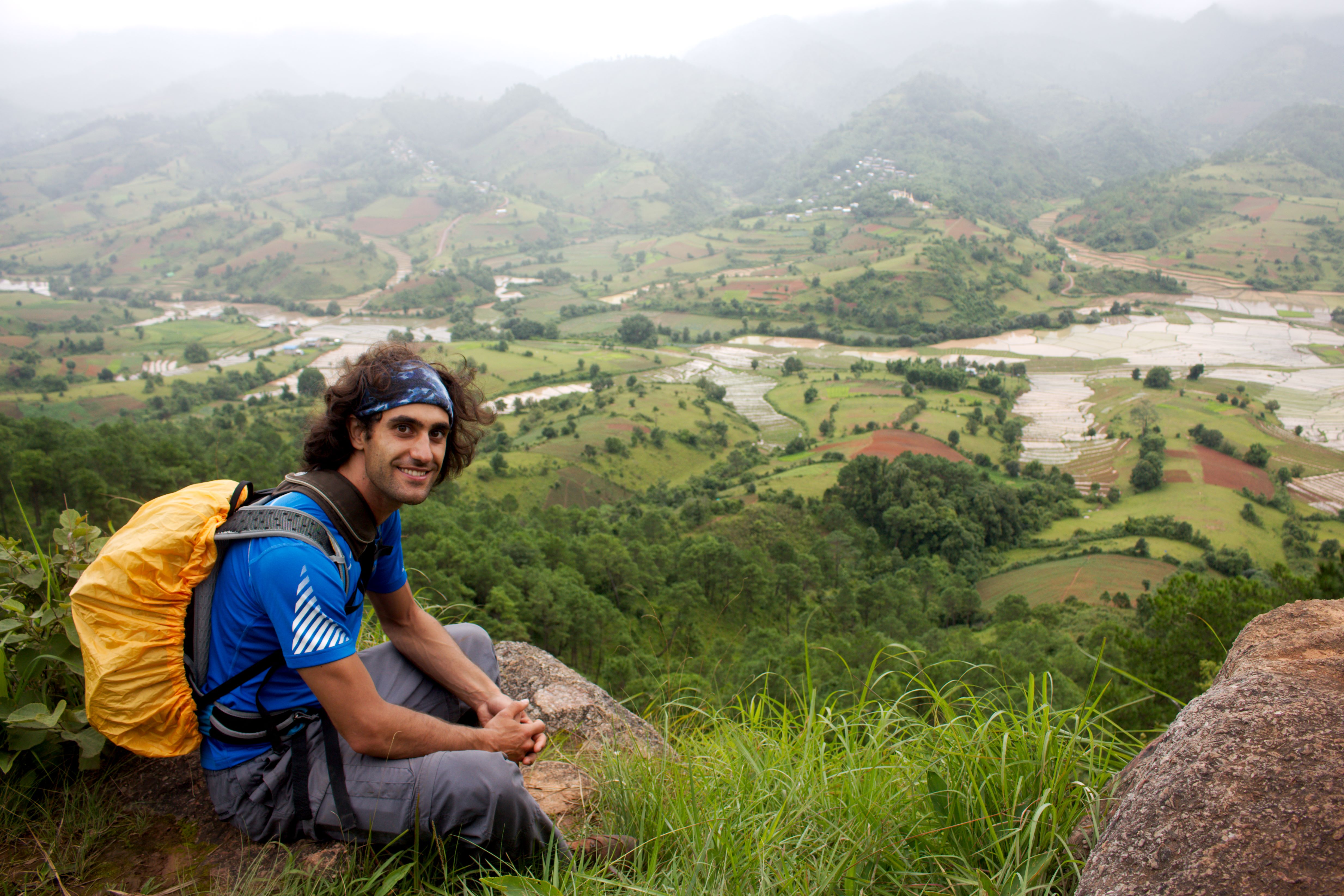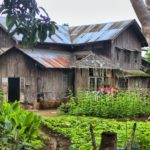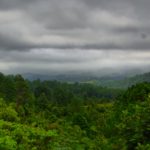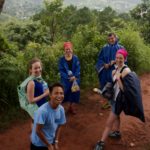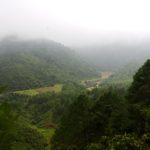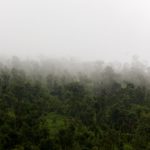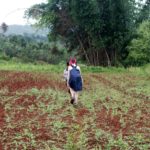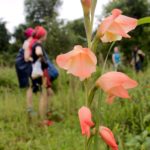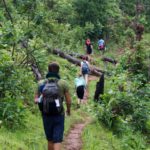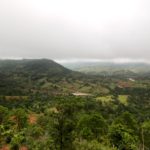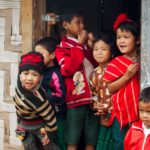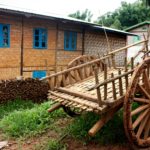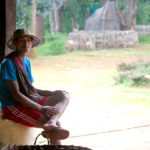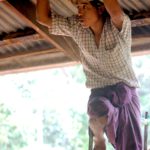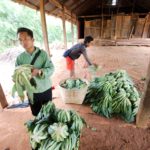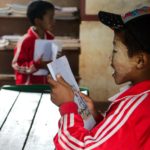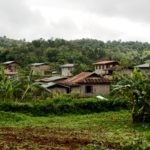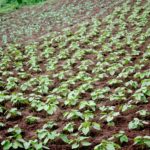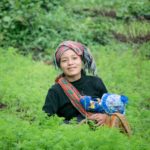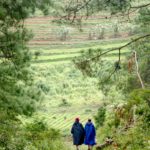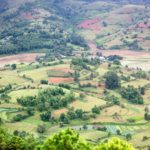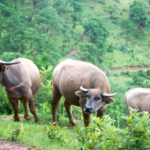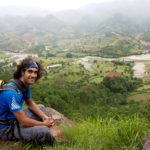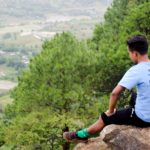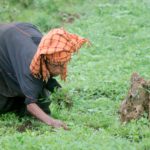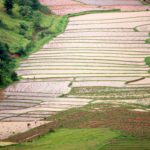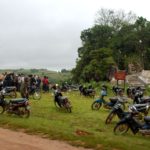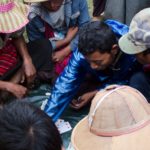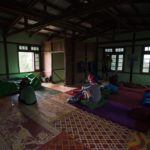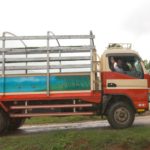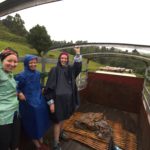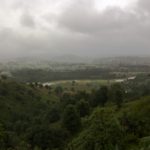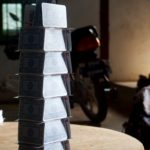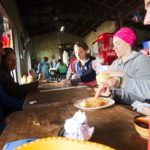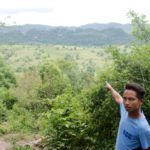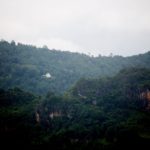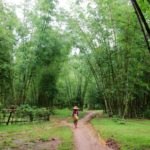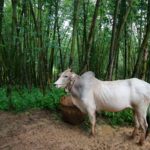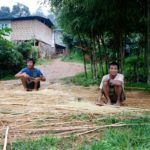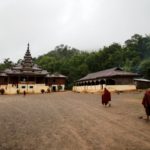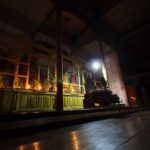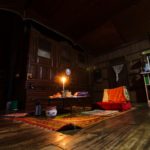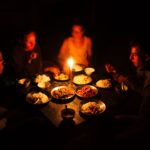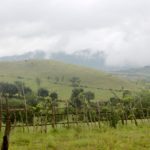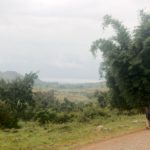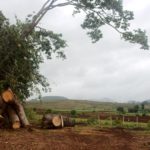I arrived in Kalaw at 4.30am, stumbling dreary-eyed off the bus and feeling like I’d eaten a bucket of butterflies. And the butterflies all had flamethrowers, and knives. They also wanted out, in all directions, and they weren’t hanging about.
Throwing myself into the “cheapest hotel” as directed by the bus driver, I haggle a few hours sleep out of the night guard at the “Golden Lily Hostel”, dump my stuff into the sweaty little room and proceed to spend the next 5 hours either 1) in the bathroom, or 2) in bed thinking about being in the bathroom. It was not a good night, leaving me feeling like jelly and sticks. In the morning, I walked straight past the breakfast room, my brain conjuring images of the food sprouting legs and spears and threatening me to an early grave. No breakfast, thanks.
At arrival in reception I was immediately asked if I wanted to join the 3 day trek to Inle Lake, starting that morning. As my stomach turned over again, and my eyes glanced the heaving rain spewing waterfalls off the side of the reception shelter, my gut reaction was “YOLO”, which should have been the first sign that I was about to make a bad decision. I accepted, hastily separated my necessities into my daypack (I suspect this was the moment I lost my laptop charger) and joined 4 other travellers and the guide to start the tour. Here goes…
Day 1
Straight off, we introduced ourselves. There were two French girls, a German girl, an English lad, and me (or at least, my body. My brain and stomach were elsewhere). Our guide introduced himself as Saloi – easy enough! So straight away, I insisted that we pass by the market to stock up on electrolytes, unless someone was prepared to volunteer carrying me up the first hill.
Pumped and ready, we were soon off, stopping briefly by a holy “Banyan” (or “Bodi”) tree to hear a little about Buddhism, and why it was gated off to stop the kids and monkeys from nicking holy tributes. I didn’t get any photos because it was hooning it down, and I was terrified to get my camera out. This was a common occurrence throughout the trek, unfortunately.
It didn’t take us much of a climb to feel like we’d really left the city, and entered the middle of nowhere:
The weather wasn’t holding out well – there was continuous rain, as well as a mysterious fog everywhere.
The ground was suffering too; with every 3 steps forward we slipped 1 back. It was slow, gruelling progress, but often we found an alternative path by trudging through a farmer’s field or forking off the main road onto a path through the jungle.
After a few hours trekking we made it through our first village for lunch. We had the same chef for all 3 days and he did a fantastic job of keeping us well fed with hot, totally edible food. I started slowly at first, but grew to love the cooking as the trek went on. The village we stopped at was charming, and occupied by the “Pa-O” tribe, who have large presence in the area. Saloi told us about how the locals are self-sufficient, and sell surplus vegetables in bulk to the local market vendors, which brings in extra cash for building repairs and other expenses.
Setting off with a little more energy, we climbed higher into the mist and found ourselves following high ridges looking down on rice-paddy laden valleys and spectacular jungle farmland hills:
As we left the higher areas we dropped altitude towards our destination village where we’d rest for the evening. We came across a group of locals gathered in front of the Stupa (shrine). Saloi asked them what was happening, and we were told that a young monk (17 years old) had died, and that this was his funeral. They were celebrating his life, by gambling and drinking in front of the Stupa. This to us seemed strange, but the locals seemed to be having a great time in the monk’s memory, and in a way that’s undeniably a beautiful thing.
Our accommodation that night was a simple, beautiful village again occupied by the Pa-O tribe. We were told upon arrival the most important thing: the rainwater falls straight from a metal roof into a clean, large basin, and this is where all of the village gathers their drinking water. So, don’t wash your feet in it. Instead, take a bucket, scoop up what you need and use it how you wish (with the amount of rain, there’s damned plenty of it, so fill your boots) – just remember to pour away the extra, never back into the pool.
Dinner was beautifully prepared and offered, and we learned that Burmese culture requires that guests eat first, with Saloi and our host waiting until we’d finished before commencing their meal.
Darkness fell like a stone, and with 17km under our boots, we were assured a good night’s sleep.
Day 2
IT WAS BELTING IT DOWN. ALL DAY.
Nothing we’d hung inside had dried over night due to the sweltering humidity, and the rain was so relentless that after a rapid breakfast and a near-sprint to the cover of the jungle, we were all soaked to the skin.
Saloi took the initiative and hijacked a “chicken truck”, which happened to be heading in the same direction:
We then only had a short walk to the next village before we could hide inside, lapping up the time the truck saved us by playing cards and drying out over green tea:
When the rain dies down, we bring ourselves to continue walking, and climb around the valley to a viewpoint where we can see our destination that evening; a wooden monastery 15km away from Inle Lake:
First, we ascended through the pouring rain into the jungle. I couldn’t get the camera out for the downpour, but the views, experience and climb were fantastic. We didn’t see any monkeys, but we heard them!!
The rain didn’t stop until we’d dropped down the other side of the mountain jungle and entered the bamboo forest which housed our monastery:
The monastery itself was beautiful too. Made in wood over 200 years ago, it houses 15-17 monks full time, with 10-20 more young monks in temporary residence at any one time. We stayed, and attracted a lot of attention from the younger monks, who were intrigued by my camera’s ability to capture pictures in complete darkness:
Day 3
The final day’s trek was definitely the most interesting, as the scenery evolved around us into lush jungle and lowland rice fields during our approach to the lake. We came across a Banyan tree that had been struck by lightning, and Saloi told us that only the monks may use the wood from the hoy Banyan tree. They make ornaments, and burn the wood, though it’s very rarely used for furniture or building due to its heavy, wet texture.
A further few kilometres and we wound down our trek through a beautiful, sparse jungle, where red clay soil contrasted with the green of the leaves and trees like an alien landscape.
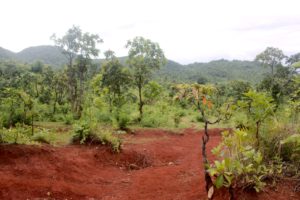
A final bamboo forest emerged, and at the final clearing we found ourselves at the banks of Inle Lake; exhausted, soaked inside-out, and utterly inspired by the beauty of our new-found land. I’ll show you in just a moment – don’t fall off the shadow of my boots 😉
